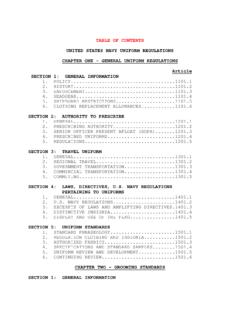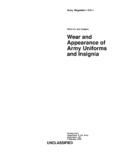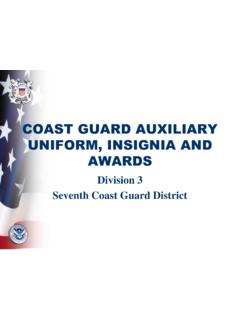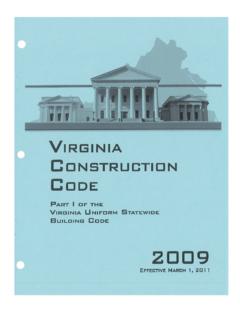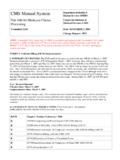Transcription of CHAPTER ONE - U.S. NAVY UNIREGS (GENERAL …
1 CHAPTER ONE. general uniform regulations . SECTION 1: general INFORMATION. SECTION 2: AUTHORITY TO PRESCRIBE. SECTION 3: TRAVEL uniform . SECTION 4: LAWS, DIRECTIVES, NAVY regulations . PERTAINING TO UNIFORMS. SECTION 5: uniform STANDARDS. CHAPTER ONE. general uniform regulations . SECTION 1: general INFORMATION. Article 1. 2. 3. 4. 5. SHIPBOARD 6. CLOTHING REPLACEMENT 1101. general INFORMATION. 1. POLICY. The purpose of the Navy uniform regulations is to: (1) Provide descriptions of all autho- rized Navy uniforms and components, and (2) Provide guidance for all Navy activities prescribing uniform wear in order to present a uniform image world-wide. It is issued by direction of the Chief of Naval Operations and carries the force of a general Order. Any procedures or components, regarding uniforms or grooming, not discussed in these regulations are prohibited. a. Applicability. The provisions of this manual apply to all personnel who are authorized to wear the Navy uniform .
2 It is issued for information and guidance, and requires compliance when wearing naval uniforms. This manual is the sole source for dictating how to correctly wear Navy uniforms and uniform components. It super- sedes UNITED STATES NAVY uniform regulations , NAVPERS. 15665H dated 19 April 1991, and all other existing direc- tives on Navy uniforms. After 1 January 1996, Navy uniform regulations will be distributed quarterly via BUPERS Direc- tives in CD ROM format and will contain revisions and up- dates to the 1995 manual. For distribution information, see <Link>. b. Navy uniform Board (NUB). Deputy Chief of Naval Operations (Manpower, Personnel Training and Education) (N1) is charged by the Chief of Naval Operations (CNO), through the Navy uniform Board, to continuously review Navy uniform matters. Composition and functions of the Navy uniform Board are set forth below. (1) Membership & Structure a. Members: Chief of Naval Personnel (N1), Board President; Superintendant Naval Academy.
3 Commander, Navy Education and Training Command; Commander, Navy Reserve Forces Command; Commander, Naval Supply System Command; Manpower, Personnel, Training and Education Policy Division (N13); Director, Diversity and Women's Policy Division (N134); Director, Resource Management Division (N10); and the Master Chief Petty Officer of the Navy. Fleet Representatives (Non-voting members) include Fleet Forces Command, Fleet Master Chief; Manpower Personnel Training & Education, Fleet Master Chief; (O5/E9) female Representatives from PACFLT/LANTFLT O4/O5 (Alternate annually); and PACFLT/LANTFLT E8/E9 (Alternate annually). b. Permanent Staff: uniform Matters Office (Civilian Head, E9 Assistant Head and E6 Civilian Clothing Allowance Specialist). c. Impact and Requirement Panel: uniform Matters Office (Policy/requirements), N10 (Funding requirements & analysis), Navy Clothing & Textile Research Facility (NCTRF) (Research, Development, Testing and Evaluation), and Navy Exchange Command (NEXCOM) uniform Program Management Office (UMPO) (Distribution, Retail &.)
4 Execution). d. Subject Matter Experts: UMPO, Navy Exchange Command, Defense Supply Center Philadelphia (DSCP), NCTRF, and Navy Community Representatives (invited). e. Working Groups. The President is authorized to convene working groups as necessary to perform special functions and studies in carrying out the mission of the Navy uniform Board. (2) Mission. The mission of the uniform Board is to consider any matter related to Navy uniforms in which a perceived problem exists or in which a possible improvement can be made. The uniform Board will be guided by the uniform goals and policy established by the Secretary of the Navy and the Chief of Naval Operations (CNO). (3) Responsibilities a. Board President: Convene uniform Board (at least semi-annually, and/or as deemed necessary);. announce uniform Board convening dates and Board results;. screen suitability of recommendations for review, endorsement and forwarding for CNO review; forward reports and recommendations to CNO via VCNO; prepare approved changes to Navy uniform regulations ; communicate uniform changes to the Fleet; convene special working groups as required; and ensure uniform changes are kept to a minimum and in consonance with the history and traditions of the Navy.
5 B. Board Members: Represent respective area of responsibility, review proposals, and make recommendations to the President. c. Permanent Staff: Support the Board President in carrying out his/her responsibilities;. establish points of contact with Echelon 1 and 2. organizations to ensure uniform concerns and recommendations are presented to the Navy uniform Board;. review and recommend specification changes concerning design, detail and material of uniform items; maintain and interpret Navy uniform regulations per uniform policy and CNO decisions; monitor implementation of uniform policy; review development and testing of proposed uniforms and implementation of approved uniform components; monitor procurement, issue, and retail of Navy uniforms ensuring conformance with uniform regulations ; maintain awareness of other services uniform developments; review individual clothing allowances for the CNO approved Seabag requirements prior to submission to office of Assistant Secretary of the Navy (Manpower and Reserve Affairs).
6 D. Impact and Requirement Panel: Evaluate uniform proposals for impact and requirements prior to submission to the uniform Board; categorize proposals as Accessions, Fleet, or Organizational requirement/impact;. and submit a report to uniform Board identifying requirements and associated impact to implement submitted proposals. (4) uniform Change Recommendations. Sailors may make uniform or uniform regulation change recommendations via their chain of command to the uniform Board. Recommendations are to be submitted in letter format with subject line REQUEST FOR uniform BOARD POLICY CHANGE. Recommendations should reflect Navy-wide application with an eye towards standardization and uniform policy reduction. uniform change proposals are to be endorsed via cover letter by each endorsing echelon. The final endorsement should include proposal Subject Matter Expert contact information. uniform proposals which are not endorsed favorably at any level will not be accepted by the board.
7 Proposals favorably endorsed shall be submitted to Navy uniform Board, Deputy Chief of Naval Operations (N131U), 2 Navy Annex, Room 3024, Washington, DC 20370- 5000. Recommendations shall be submitted as follows: a. Fleet units: Uniforms and uniform regulation change proposals shall be evaluated and endorsed at the unit level, forwarded through the chain of command up to the force (TYCOM)(N1) and fleet level (N1), as appropriate. Fleet commanders will perform a final screening and endorsement prior to final forwarding to the Navy uniform Board. b. Shore installations: Forward evaluated and endorsed recommendations to Commander, Navy Installations Command (CNIC) via their respective region commander. CNIC will forward recommendations to Fleet Forces (N1) for consideration. Fleet Forces forward approved recommendations with endorsement to the Navy uniform Board. c. Training commands (less Naval Academy): Forward evaluated and endorsed recommendations to Navy Education and Training Command (NETC).
8 NETC will perform a final screening and endorsement to the Navy uniform Board. d. All others: Uniforms and uniform Regulation change proposals shall be evaluated and endorsed at the unit level and forwarded through the administrative chain of command with final endorsement to the Navy uniform Board. 2. HISTORY. Historically, uniforms have been the product of a sailor's environment: physical, geographical and technical. Uniforms were provided for protection against the elements or to create distinction among spe- cialists in a growing Navy. Foremost, however, was an element of simplicity providing a uniform that would not interfere with the Sailor's everyday tasks. Women's uni- forms, on the other hand, were designed to duplicate civil- ian fashion trends. Today's Navy has narrowed the gap between men's and women's career paths. Women now perform many of the same tasks and have the same specialties as their male counterparts.
9 These changes necessitated a more definitive policy to bring the uniforms of both men and women more closely in line with each other. 3. ENFORCEMENT. These regulations define the com- position of authorized uniforms. Navy uniforms are dis- tinctive visual evidence of the authority and responsibility vested in their wearer by the United States. The prescribing authority determines when and where the uniforms in this manual are appropriate for wear. Uniforms and components shall be worn as described in these regulations . Navy personnel must present a proud and professional appearance that will reflect positively on the individual, the Navy and the United States. While in uniform , it is inappropriate and detracts from military smartness for personnel to have their hands in their pockets. Additionally, when walking from point to point while in uniform , it is inappropriate and detracts from military smartness for personnel to be smoking or using tobacco products, or to be eating and/or drinking.
10 All personnel shall comply with these regulations and be available to teach others the correct wear of Navy uniforms. Exemplary military appearance should be the norm for uniformed personnel. These regulations describe all authorized Navy uniforms and the proper manner for their wear. 4. HEADGEAR. a. general . The cap/hat is an integral part of the uniform . uniform headgear is not required to be worn when ships are at sea outside harbor limits, except on specific watches or on ceremonial occasions specified by the commanding officer or higher authority. uniform head- gear is required in port, unless safety prohibits wear, , foreign object damage (FOD). b. Outdoor Wear. Outdoors, personnel remain covered at all times unless ordered to uncover, or during religious services not associated with a military ceremony. Personnel remain covered during invocations or other religious military ceremonies such as changes of command, ships' commissionings and launchings, and military burials, etc.
